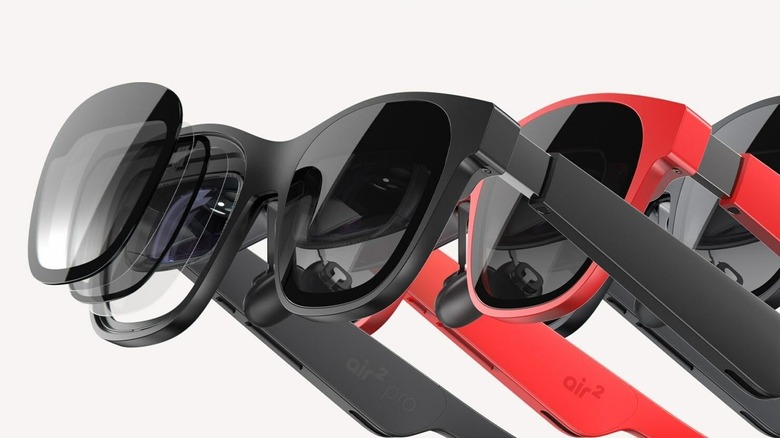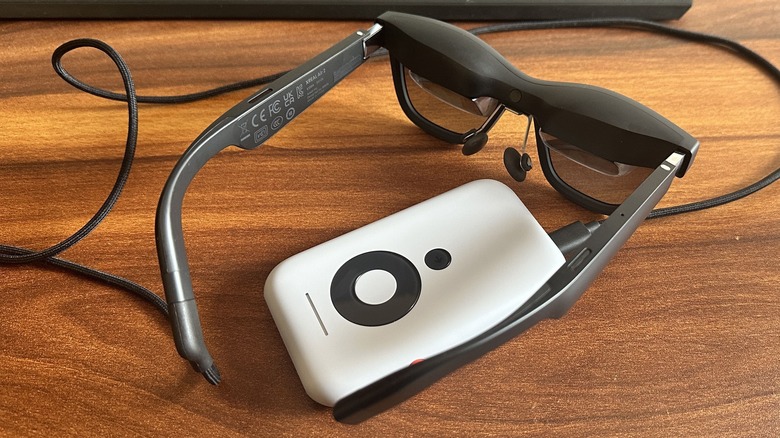Xreal Air 2 Glasses Preorders Open: Here's How Much They'll Cost You
Xreal — formerly Nreal — has introduced its latest AR glasses in the U.S. weeks after their launch in China. The biggest improvement on the Xreal Air 2 series over the first-gen glasses are the Sony-made 0.55 Micro-OLED panels, offering a higher brightness output of 500 nits. They support a peak refresh rate of 120Hz with a 49-degree field of view, and density of 49 pixels per degree. These panels are also TUV Rheinlad certified for color accuracy and blue light filtering.
Depending on the display mode, users can get up to a 330-inch virtual screen in front of their eyes. Weight reduction is minimal, but Xreal has focused on making the wearable more comfortable this time around. The Xreal 2 series features a refined zero-pressure nose pad that is more comfortable, and offers a higher degree of flexibility compared to the first-generation Xreal Air glasses. The aesthetic design remains largely unchanged from the first-gen, borrowing heavily from Ray-Ban's classic Wayfarer look.
The weight ratio is better balanced, and temple comfort is also improved. The company has also fitted these glasses with an upgraded sound system that offers directional audio output for the first time, reducing audio leakage to the user's surroundings and offering a more private listening experience.
Xreal is offering the Air 2 ($399) and its Pro variant ($449) in Graphite Gray and Carmine Red shades, but you can jazz up the looks with adhesive skins; available in Navy Blue, Verdigris, Royal Blue, Dale Dogwood, Jonquil, and Dartmouth Green colors.
What's special about the Pro?
The Xreal Air 2 Pro offers a feature called "electrochromic dimming" that allows users to change the opacity of the glasses. It turns the front glass nearly opaque, which means you won't be distracted by the view around you, and can view content on the micro-LED panels inside with high levels of immersion and color fidelity.
Users can choose between 0%, 35% and 100% opacity levels to reduce outside distractions. For reference, OnePlus used the same tech on the Concept One phone, allowing the camera lenses to hide behind a strip of aesthetically positioned glass at the back.
As usual, pairing happens via USB-C port, and these glasses are ready to play even on iPadOS and ChromeOS without any external software involved. However, if you want to cast wirelessly from your device, you will have to spend more money on the Xreal Beam accessory.
In order to experience up to three floating virtual desktops on macOS, you will need to install the Nebula software as well. Augmented Reality experiences on the mobile platform are also exclusive to the Nebula app, which brings support for video streaming, AR games, and even web browsing with a unique flow approach on a vertically-curved virtual screen.
The Xreal Air 2 is priced at $399, while the Pro variant will set you back by $449. Preorders for the new glasses are already live on Xreal's website, and shipments begin in November.

